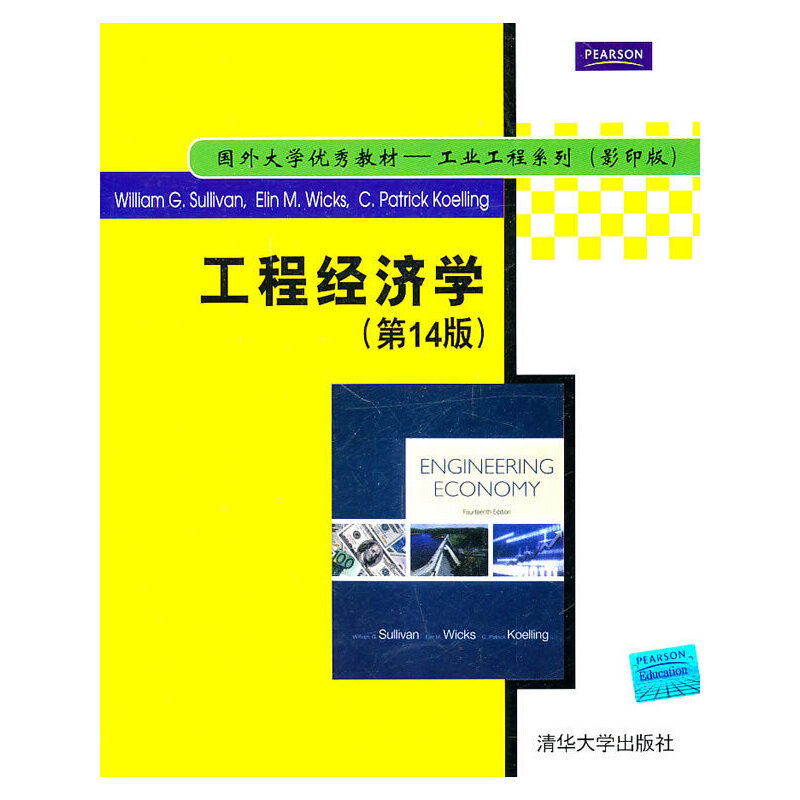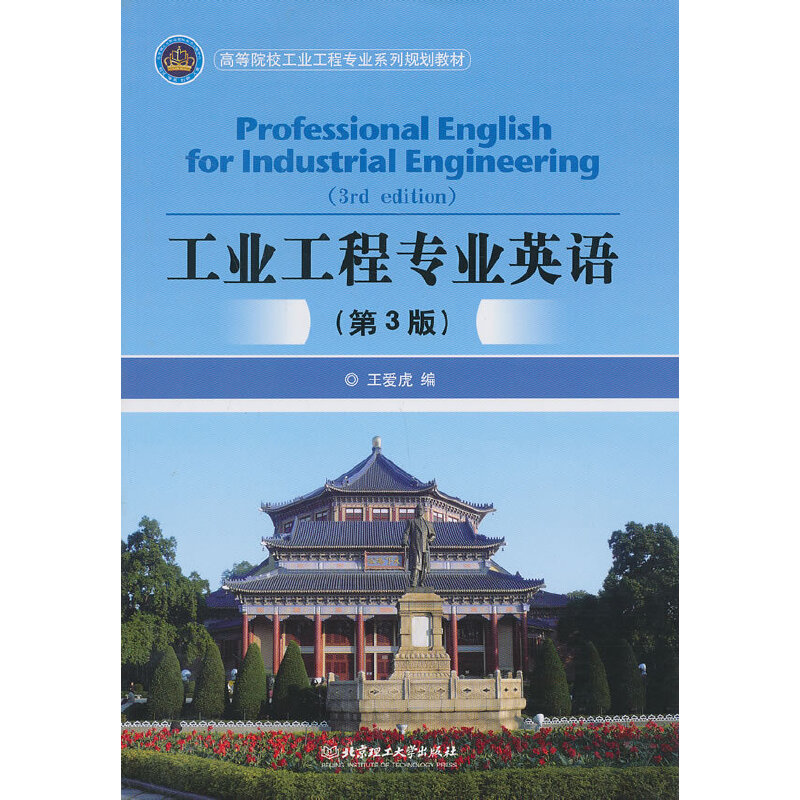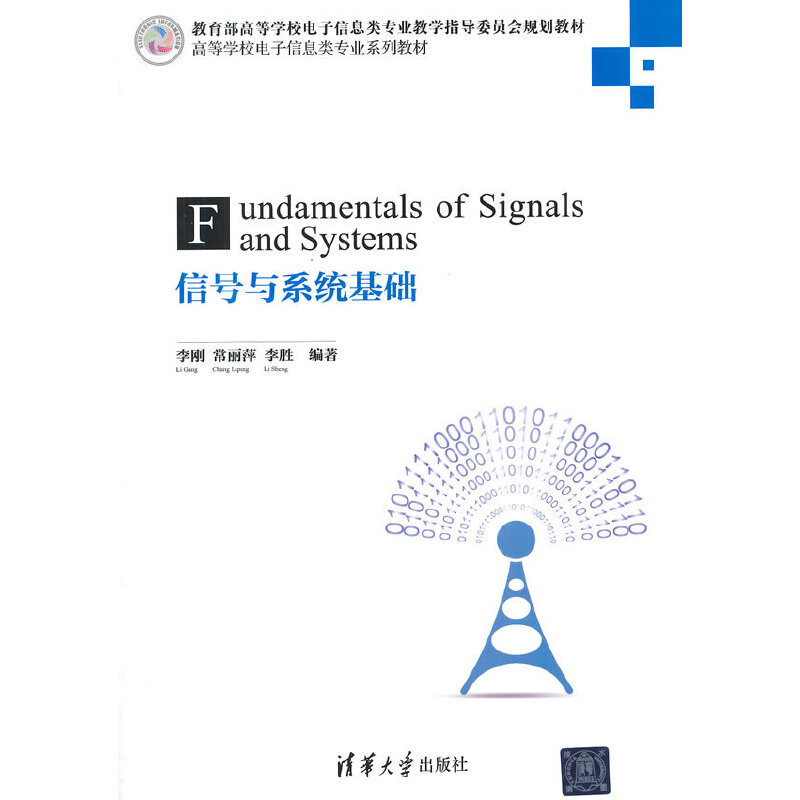工程经济学(第14版)(影印版) / 国外大学优秀教材·工业工程系列
定价:¥76.00
作者: [美]Sullivan、Wicks等
出版时间:2014年8月
出版社:清华大学出版社
- 清华大学出版社
- 9787302246961
- 1-2
- 153157
- 16开
- 2014年8月
- F403.7
- 机电类
- 本专科、高职高专
内容简介
WillianG.Sullivan等编著的《工程经济学(第14版)(影印版)》是工程经济学领域的畅销教材,麻省理工学院等数十所美国大学以及英国、韩国、新加坡等很多国家的一些知名院校都将本书作为“工程经济学”课程的最主要教材。
本书系统介绍了工程经济分析的理论、原理、方法和应用案例。全书共分为3部分。第1部分是工程经济基本原理,主要阐述工程经济分析的基本原则、重要的成本概念和估计技术、货币时间价值原理等工程经济学的基本概念和原理;第2部分介绍工程经济基本方法,深入分析了投资方案的赢利性评价方法和比选方法,折旧、所得税、通货膨胀等对评价方法的影响,设备更新分析方法,不确定性分析方法;第3部分为工程经济分析方法特别专题,内容包括公共项目的费用效益分析方法、风险分析技术和融资及资本预算方法。
《工程经济学(第14版)(影印版)》适合作为经济类、管理类、工业工程及相关专业本科生或研究生的教材。
本书系统介绍了工程经济分析的理论、原理、方法和应用案例。全书共分为3部分。第1部分是工程经济基本原理,主要阐述工程经济分析的基本原则、重要的成本概念和估计技术、货币时间价值原理等工程经济学的基本概念和原理;第2部分介绍工程经济基本方法,深入分析了投资方案的赢利性评价方法和比选方法,折旧、所得税、通货膨胀等对评价方法的影响,设备更新分析方法,不确定性分析方法;第3部分为工程经济分析方法特别专题,内容包括公共项目的费用效益分析方法、风险分析技术和融资及资本预算方法。
《工程经济学(第14版)(影印版)》适合作为经济类、管理类、工业工程及相关专业本科生或研究生的教材。
目录
Preface
Acknowledgments
PART 1 Fundamentals of Engineering Economy
CHAPTER 1 Introduction to Engineering Economy
1.1 Introduction
1.2 The Principles of Engineering
Economy
1.3 Engineering Economy and the Design
Process
1.4 Using Spreadsheets in Engineering
Economic Analysis
1.5 Summary
CHAPTER 2 Cost Concepts and Design Economics
2.1 Cost Terminology
2.2 The General Economic Environment
2.3 Cost-Driven Design Optimization
2.4 Present Economy Studies
2.5 Case Study——The Economics of Daytime
Running Lights
2.6 Summary
Appendix 2-A Accounting Fundamentals
CHAPTER 3 Cost-Estimation Techniques
3.1 Introduction
3.2 An Integrated Approach
3.3 Selected Estimating Techniques
(Models)
3.4 Parametric Cost Estimating
3.5 Cost Estimation in the Design
Process
3.6 Case Study——Demanufacturing of
Computers
3.7 Summary
CHAPTER 4 The Time Value of Money
4.1 Introduction
4.2 Simple Interest
4.3 Compound Interest
4.4 The Concept of Equivalence
4.5 Notation and Cash-Flow Diagrams and
Tables
4.6 Relating Present and Future Equivalent
Values of Single Cash Flows
4.7 Relating a Uniform Series (Annuity) to
Its Present and Future Equivalent Values
4.8 Summary of Interest Formulas and
Relationships for Discrete Compounding
4.9 Deferred Annuities (Uniform
Series)
4.10 Equivalence Calculations Involving
Multiple Interest Formulas
4.11 Uniform (Arithmetic) Gradient of Cash
Flows
4.12 Geometric Sequences of Cash
Flows
4.13 Interest Rates that Vary with
Time
4.14 Nominal and Effective Interest
Rates
4.15 Compounding More Often than Once per
Year
4.16 Interest Formulas for Continuous
Compounding and Discrete Cash Flows
4.17 Case Study——Understanding Economic
“Equivalence”
4.18 Summary
Part Ⅱ Engineering Economy in Action
CHAPTER 5 Evaluating a Single Project
5.1 Introduction
5.2 Determining the Minimum Attractive Rate
of Return (MARR)
5.3 The Present Worth Method
5.4 The Future Worth Method
5.5 The Annual Worth Method
5.6 The Internal Rate of Return
Method
5.7 The External Rate of Return
Method
5.8 The Payback (Payout) Period
Method
5.9 Case Study——A Proposed Capital
Investment to Improve Process Yield
5.10 Summary
Appendix 5-A The Multiple Rate of Return
Problem with the IRR Method
CHAPTER 6 Comparison and Selection among
Alternatives
6.1 Introduction
6.2 Basic Concepts for Comparing
Alternatives
6.3 The Study (Analysis) Period
6.4 Useful Lives Are Equal to the Study
P.eriod
6.5 Useful Lives Are Unequal among the
Alternatives
6.6 Personal Finances
6.7 Case Study--Ned and Larry's Ice Cream
Company
6.8 Postevaluatio.n of Results
6.9 Summary
CHAPTER 7 Depreciation and Income Taxes
7.1 Introduction
7.2 Depreciation Concepts and
Terminology
7.3 The Classical (Historical)
Depreciation, Methods
7.4 The Modified Accelerated Cost Recovery'
System
7.5 A Comprehensive Depreciation
Example
7.6 Introduction to ,Income Taxes
7,7 The Effective (Marginal)Corporate
Income Tax Rate
7.8 Gain (Loss) on the Disposal of an
Asset
7.9 General.Procedure for Making After;Tax
Economic Analyses
7.10 Illustration of Computations of
ATCFs
7.11 Economic Value Added
7.12 Summary
CHAPTER 8 Price Chancles and Exchancle Rates
8.1 Introduction
8.2 Terminology and Basic Concepts
8.3 Fixed and Responsive Annuities
8.4 Spreadsheet Application
8.5 Foreign Exchange Rates and Purchasing
Power Concepts
8.6 Case Study--Selecting Electric Moto.rs
to Power an Assembly Line
8.7 Summary
CHAPTER 9 Replacement Analysis
9.1 Introduction
9.2 Reasons for Replacement Anaiysis
9.3 Factors that Must Be Considered in
Replacement Studies
9.4 Typisal Replacement Problems
9.5 Determining the Economic Life:of a New
Asset (Challenger)
9.6 Determining the Economic Life of a
Defender
9.7 Comparisons in which the Defender's
Useful Life Differs from that of the Challenger
9.8 Retirement without Replacement
(Abandonment)
9.9 AfterTax Replacement Studies
9.10 Case Study--Replacement of a
Hospital's Emergency Electrical Supply System
9.11 Summary
PART Ⅲ Additional Topics in Engineering Economy
CHAPTER 10 Evaluating Projects with the Benefit-Cost
Ratio Method
10.1 Introduction
10.2 Perspective and Terminology for
Analyzing Public Projects
10.3 Self-Liquidating Projects
10.4 Multiple-Purpose Projects
10.5 Difficulties in Evaluating
Public-Sector Projects
10.6 What Interest Rate Should Be Used for
Public Projects?
10.7 The Benefit-Cost Ratio Method
10.8 Evaluating Independent Projects by B-C
Ratios
10.9 Comparison of Mutually Exclusive
Projects by B--C Rations
10.10 Criticisms and Shortcomings of the
Benefit-Cost Ratio Method
10.11 Case Study--Improving a Railroad
Crossing
10.12 Summary
CHAPTER 11 Breakeven and Sensitivity Analysis
11.1 Introduction.
11.2 Breakeven Analysis
11.3 Sensitivity Analysis
11.4 Multiple Factor Sensitivity
Analysis
11.5 Case Study--Analysis of a Business
Venture
11.6 Summary
CHAPTER 12 Probabilistic Risk Analysis
12.1 Introduction
12.2 Sources of Uncertainty
12.3 The Distribution of Random
Variables
12.4 Evaluation of Projects with Discrete
Random Variables
12.5 Evaluation of Projects with Continuous
Random Variables
12.6 Evaluation of Uncertainty by Monte
Carlo Simulation
12.7 Performing Monte Carlo Simulation with
a Computer
12.8 Decision Trees
12.9 Real Options Analysis
12.10 Case Study--The Oils Well That Ends
Well Company
12.11 Summary
CHAPTER 13 The Capital Budgeting Process
13.1 Introduction
13.2 Debt Capital
13.3 Equity Capital
13.4 The Weighted Average Cost of Capital
(WACC)
13.5 Project Selection
13.6 Postmortem Review
13.7 Budgeting of Capital Investments and
Management Perspective
13.8 Leasing Decisions
13.9 Capital Allocation
13.10 Case Study--Financing an
Automobile
13.11 Summary
CHAPTER 14 Decision Making Considering
Multiattributes
14.1 Introduction
14.2 Examples of Multiattribute
Decisions
14.3 Choice of Attributes
14.4 Selection of a Measurement Scale
14.5 Dimensionality of the Problem
14.6 Noncompensatory Models
14.7 Compensatory Models
14.8 Summary
PART Ⅳ Appendices
A Using Excel to Solve Engineering Economy
Problems
B Abbreviations and Notation
C Interest and Annuity Tables for Discrete
Compounding
D Interest and Annuity Tables for Continuous
Compounding
E Standard Normal Distribution
F Selected References
G Answers to Selected Problems
Index
Acknowledgments
PART 1 Fundamentals of Engineering Economy
CHAPTER 1 Introduction to Engineering Economy
1.1 Introduction
1.2 The Principles of Engineering
Economy
1.3 Engineering Economy and the Design
Process
1.4 Using Spreadsheets in Engineering
Economic Analysis
1.5 Summary
CHAPTER 2 Cost Concepts and Design Economics
2.1 Cost Terminology
2.2 The General Economic Environment
2.3 Cost-Driven Design Optimization
2.4 Present Economy Studies
2.5 Case Study——The Economics of Daytime
Running Lights
2.6 Summary
Appendix 2-A Accounting Fundamentals
CHAPTER 3 Cost-Estimation Techniques
3.1 Introduction
3.2 An Integrated Approach
3.3 Selected Estimating Techniques
(Models)
3.4 Parametric Cost Estimating
3.5 Cost Estimation in the Design
Process
3.6 Case Study——Demanufacturing of
Computers
3.7 Summary
CHAPTER 4 The Time Value of Money
4.1 Introduction
4.2 Simple Interest
4.3 Compound Interest
4.4 The Concept of Equivalence
4.5 Notation and Cash-Flow Diagrams and
Tables
4.6 Relating Present and Future Equivalent
Values of Single Cash Flows
4.7 Relating a Uniform Series (Annuity) to
Its Present and Future Equivalent Values
4.8 Summary of Interest Formulas and
Relationships for Discrete Compounding
4.9 Deferred Annuities (Uniform
Series)
4.10 Equivalence Calculations Involving
Multiple Interest Formulas
4.11 Uniform (Arithmetic) Gradient of Cash
Flows
4.12 Geometric Sequences of Cash
Flows
4.13 Interest Rates that Vary with
Time
4.14 Nominal and Effective Interest
Rates
4.15 Compounding More Often than Once per
Year
4.16 Interest Formulas for Continuous
Compounding and Discrete Cash Flows
4.17 Case Study——Understanding Economic
“Equivalence”
4.18 Summary
Part Ⅱ Engineering Economy in Action
CHAPTER 5 Evaluating a Single Project
5.1 Introduction
5.2 Determining the Minimum Attractive Rate
of Return (MARR)
5.3 The Present Worth Method
5.4 The Future Worth Method
5.5 The Annual Worth Method
5.6 The Internal Rate of Return
Method
5.7 The External Rate of Return
Method
5.8 The Payback (Payout) Period
Method
5.9 Case Study——A Proposed Capital
Investment to Improve Process Yield
5.10 Summary
Appendix 5-A The Multiple Rate of Return
Problem with the IRR Method
CHAPTER 6 Comparison and Selection among
Alternatives
6.1 Introduction
6.2 Basic Concepts for Comparing
Alternatives
6.3 The Study (Analysis) Period
6.4 Useful Lives Are Equal to the Study
P.eriod
6.5 Useful Lives Are Unequal among the
Alternatives
6.6 Personal Finances
6.7 Case Study--Ned and Larry's Ice Cream
Company
6.8 Postevaluatio.n of Results
6.9 Summary
CHAPTER 7 Depreciation and Income Taxes
7.1 Introduction
7.2 Depreciation Concepts and
Terminology
7.3 The Classical (Historical)
Depreciation, Methods
7.4 The Modified Accelerated Cost Recovery'
System
7.5 A Comprehensive Depreciation
Example
7.6 Introduction to ,Income Taxes
7,7 The Effective (Marginal)Corporate
Income Tax Rate
7.8 Gain (Loss) on the Disposal of an
Asset
7.9 General.Procedure for Making After;Tax
Economic Analyses
7.10 Illustration of Computations of
ATCFs
7.11 Economic Value Added
7.12 Summary
CHAPTER 8 Price Chancles and Exchancle Rates
8.1 Introduction
8.2 Terminology and Basic Concepts
8.3 Fixed and Responsive Annuities
8.4 Spreadsheet Application
8.5 Foreign Exchange Rates and Purchasing
Power Concepts
8.6 Case Study--Selecting Electric Moto.rs
to Power an Assembly Line
8.7 Summary
CHAPTER 9 Replacement Analysis
9.1 Introduction
9.2 Reasons for Replacement Anaiysis
9.3 Factors that Must Be Considered in
Replacement Studies
9.4 Typisal Replacement Problems
9.5 Determining the Economic Life:of a New
Asset (Challenger)
9.6 Determining the Economic Life of a
Defender
9.7 Comparisons in which the Defender's
Useful Life Differs from that of the Challenger
9.8 Retirement without Replacement
(Abandonment)
9.9 AfterTax Replacement Studies
9.10 Case Study--Replacement of a
Hospital's Emergency Electrical Supply System
9.11 Summary
PART Ⅲ Additional Topics in Engineering Economy
CHAPTER 10 Evaluating Projects with the Benefit-Cost
Ratio Method
10.1 Introduction
10.2 Perspective and Terminology for
Analyzing Public Projects
10.3 Self-Liquidating Projects
10.4 Multiple-Purpose Projects
10.5 Difficulties in Evaluating
Public-Sector Projects
10.6 What Interest Rate Should Be Used for
Public Projects?
10.7 The Benefit-Cost Ratio Method
10.8 Evaluating Independent Projects by B-C
Ratios
10.9 Comparison of Mutually Exclusive
Projects by B--C Rations
10.10 Criticisms and Shortcomings of the
Benefit-Cost Ratio Method
10.11 Case Study--Improving a Railroad
Crossing
10.12 Summary
CHAPTER 11 Breakeven and Sensitivity Analysis
11.1 Introduction.
11.2 Breakeven Analysis
11.3 Sensitivity Analysis
11.4 Multiple Factor Sensitivity
Analysis
11.5 Case Study--Analysis of a Business
Venture
11.6 Summary
CHAPTER 12 Probabilistic Risk Analysis
12.1 Introduction
12.2 Sources of Uncertainty
12.3 The Distribution of Random
Variables
12.4 Evaluation of Projects with Discrete
Random Variables
12.5 Evaluation of Projects with Continuous
Random Variables
12.6 Evaluation of Uncertainty by Monte
Carlo Simulation
12.7 Performing Monte Carlo Simulation with
a Computer
12.8 Decision Trees
12.9 Real Options Analysis
12.10 Case Study--The Oils Well That Ends
Well Company
12.11 Summary
CHAPTER 13 The Capital Budgeting Process
13.1 Introduction
13.2 Debt Capital
13.3 Equity Capital
13.4 The Weighted Average Cost of Capital
(WACC)
13.5 Project Selection
13.6 Postmortem Review
13.7 Budgeting of Capital Investments and
Management Perspective
13.8 Leasing Decisions
13.9 Capital Allocation
13.10 Case Study--Financing an
Automobile
13.11 Summary
CHAPTER 14 Decision Making Considering
Multiattributes
14.1 Introduction
14.2 Examples of Multiattribute
Decisions
14.3 Choice of Attributes
14.4 Selection of a Measurement Scale
14.5 Dimensionality of the Problem
14.6 Noncompensatory Models
14.7 Compensatory Models
14.8 Summary
PART Ⅳ Appendices
A Using Excel to Solve Engineering Economy
Problems
B Abbreviations and Notation
C Interest and Annuity Tables for Discrete
Compounding
D Interest and Annuity Tables for Continuous
Compounding
E Standard Normal Distribution
F Selected References
G Answers to Selected Problems
Index










